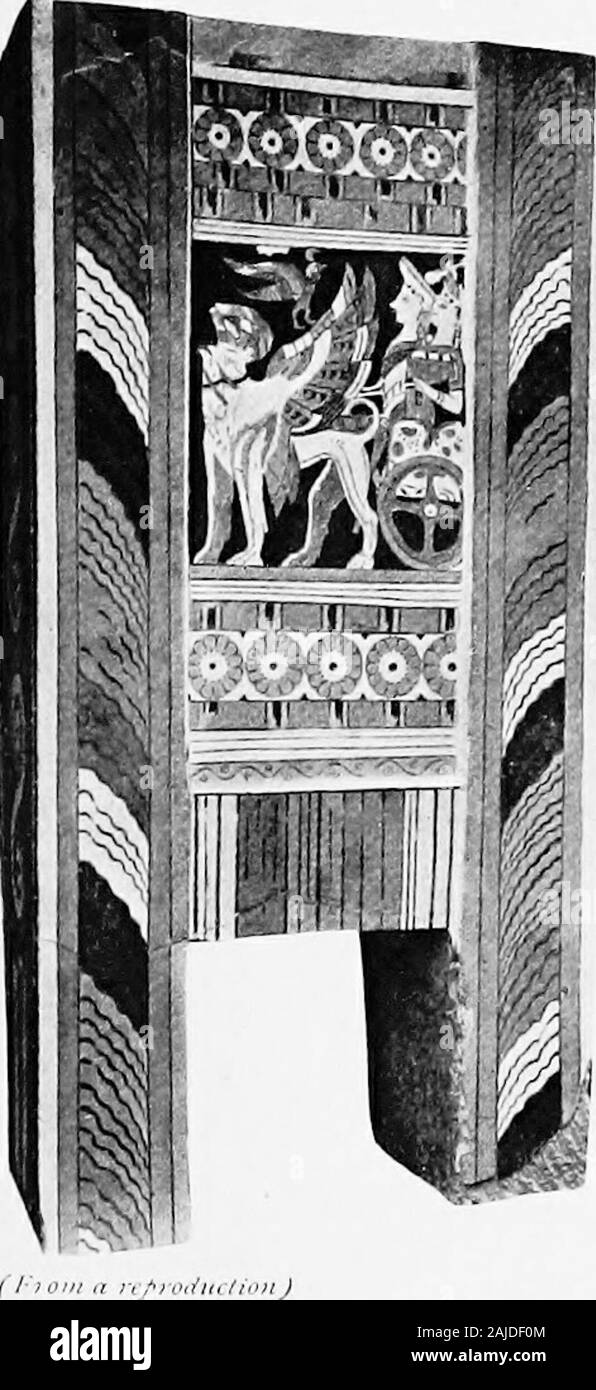Ægean archæeology; an introduction to the archæeology of prehistoric Greece . kingan irregularly cavernous shape. Tombs of bothdescriptions were found close beside each other. ^As we have seen,^ the Enk6mi necropolis is a goodexample of the way in which tombs were re-used.These evidently date from the period of the firstMinoan occupation in the fourteenth century, butmany of them were reoccupied four hundred yearslater, when the decadent Minoan culture of Cypruswas contemporary with the Geometric period in Creteand Greece. In these tombs large vases were placed which seem tohave been used as c

Image details
Contributor:
The Reading Room / Alamy Stock PhotoImage ID:
2AJDF0MFile size:
7.1 MB (353.5 KB Compressed download)Releases:
Model - no | Property - noDo I need a release?Dimensions:
1071 x 2333 px | 18.1 x 39.5 cm | 7.1 x 15.6 inches | 150dpiMore information:
This image is a public domain image, which means either that copyright has expired in the image or the copyright holder has waived their copyright. Alamy charges you a fee for access to the high resolution copy of the image.
This image could have imperfections as it’s either historical or reportage.
Ægean archæeology; an introduction to the archæeology of prehistoric Greece . kingan irregularly cavernous shape. Tombs of bothdescriptions were found close beside each other. ^As we have seen, ^ the Enk6mi necropolis is a goodexample of the way in which tombs were re-used.These evidently date from the period of the firstMinoan occupation in the fourteenth century, butmany of them were reoccupied four hundred yearslater, when the decadent Minoan culture of Cypruswas contemporary with the Geometric period in Creteand Greece. In these tombs large vases were placed which seem tohave been used as cinerary urns, the modern practice ofcremation having now been introduced, together withthe general use of iron, from Greece. They were orna-mented with painted scenes of grandees driving inchariots, bulls and other representations that still carryon the tradition of the old Minoan art, though in a verydebasedf orm (Figs. 34, 35, 51). The practice of paintingthe larnakes had been transferred to the cinerary urns. ^ Murray, Excavations in Cyprus, p. 6. Pp. 24, 105. PI, ATE XXJX.